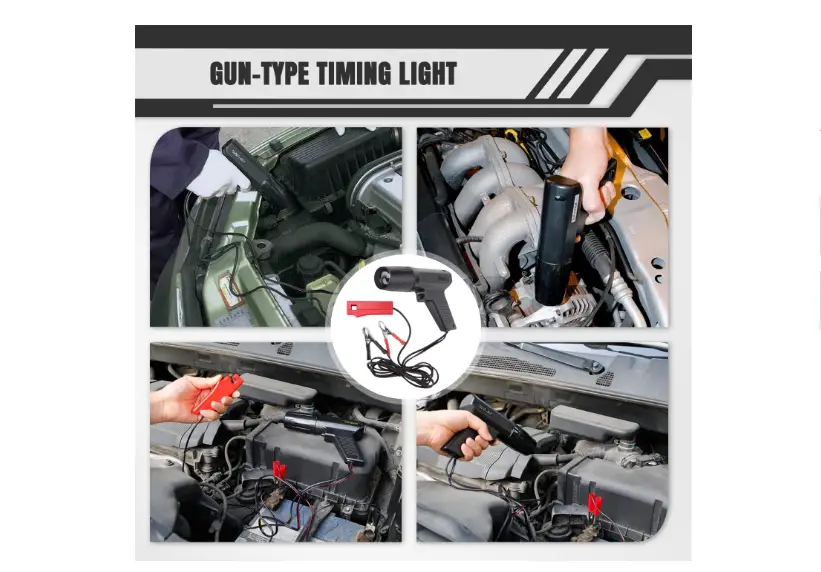Replacing the bulb in a timing light is a straightforward process that involves disassembling the timing light, removing the old bulb, and installing a new one. It’s crucial to use the correct bulb type, typically a xenon or halogen bulb, to ensure proper performance. Regular maintenance and careful handling can extend the life of the timing light and its bulb.
Timing lights are essential tools for car enthusiasts and professional mechanics alike. They help ensure your engine’s timing is correctly set, which is crucial for optimal performance and fuel efficiency. However, like any tool, timing lights can wear out over time, and one of the most common issues is a burnt-out bulb. Replacing the bulb is a relatively simple task, but it’s essential to understand the process and the tools required to do it properly.

Contents
When to Replace Timing Light Bulb
The bulb in a timing light can burn out due to various reasons, including:
- Age: Over time, the filament in the bulb can weaken and eventually break, especially if the timing light is frequently used.
- Voltage Surges: If the timing light is exposed to voltage spikes, it can cause the bulb to burn out prematurely.
- Physical Damage: Dropping the timing light or subjecting it to physical stress can cause the bulb to break.
Signs that your timing light bulb needs replacement include dim or no light emission, flickering light, or complete failure of the timing light to turn on.
Timing Light Bulb Replacement Guide
Before you begin the bulb replacement process, gather the following tools and materials:
- Replacement bulb: Ensure you have the correct bulb type for your timing light. Consult the manufacturer’s manual or look for specifications on the old bulb.
- Screwdriver: Depending on your timing light model, you may need a flathead or Phillips screwdriver to access the bulb.
- Multimeter: Optional, but useful for checking the continuity of the new bulb before installation.
- Gloves: Wear gloves to protect the new bulb from oils on your skin, which can reduce its lifespan.
Step-by-Step Guide to Replacing the Timing Light Bulb
Follow the steps to replace the bulb of timing light –
- Turn Off and Unplug the Timing Light
- Ensure the timing light is turned off and disconnected from any power source or vehicle battery. This step is crucial for your safety.
- Disassemble the Timing Light
- Using the appropriate screwdriver, carefully remove the screws holding the timing light casing together. Keep the screws in a safe place, as you’ll need them for reassembly.
- Locate the Bulb
- Once the casing is open, locate the bulb inside the timing light. The bulb is usually housed in a socket that may be secured with clips or additional screws.
- Remove the Old Bulb
- Carefully remove the old bulb from its socket. If it’s held in place by clips, gently release them to avoid damaging the socket. Dispose of the old bulb properly, especially if it’s a halogen or other specialty bulb.
- Install the New Bulb
- Take the new bulb (ensuring it’s the correct type and rating) and insert it into the socket. Make sure it’s securely in place, with any clips or screws reattached.
- Reassemble the Timing Light
- Once the new bulb is installed, reassemble the timing light by carefully aligning the casing and securing it with the screws you set aside earlier.
- Test the Timing Light
- Before using the timing light on your vehicle, plug it in or connect it to a power source and test the bulb. The light should emit a strong, steady strobe. If it flickers or doesn’t turn on, double-check the bulb installation.
Frequently Asked Questions
Here are some FAQs about the timing light bulb –
1. What type of bulb does a timing light use?
Timing lights typically use specialized xenon or halogen bulbs due to their bright, consistent light output. The exact type will vary depending on the timing light model, so consult the user manual or the old bulb for specifications.
2. How long does a timing light bulb typically last?
The lifespan of a timing light bulb depends on factors like usage frequency, voltage stability, and handling. On average, a bulb can last several years, but frequent use or exposure to voltage surges can shorten its lifespan.
3. Can I use an LED bulb in my timing light?
While LEDs are popular for their efficiency and longevity, they are generally not suitable for timing lights. Timing lights require a very bright and quick strobe, which is typically provided by xenon or halogen bulbs. Using an LED could result in poor performance.
4. What should I do if my timing light doesn’t work after replacing the bulb?
If the timing light doesn’t work after replacing the bulb, check the bulb installation to ensure it’s correctly seated in the socket. Also, inspect the power source and connections. If the issue persists, there may be a problem with the timing light’s internal circuitry, in which case professional repair or replacement may be necessary.
5. Can I replace the timing light bulb myself, or should I take it to a professional?
Replacing a timing light bulb is a straightforward process that most DIY enthusiasts can handle with basic tools. However, if you’re unsure or uncomfortable with the process, seeking help from a professional is always an option.
Conclusion
Replacing the bulb in a timing light is a simple yet essential task for maintaining the accuracy and functionality of this vital automotive tool. By following the steps outlined in this guide and paying attention to proper maintenance practices, you can ensure your timing light continues to serve you well for years to come.